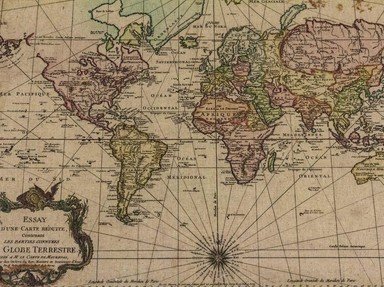Quiz Answer Key and Fun Facts
1. The state of Virginia used to include two cities, Wheeling and Charleston. What happened to them?
2. The first capital of Indiana was Corydon, in the extreme southern part of the state. It was named after the favorite hymn of a settler's daughter, "Pastoral Elegy", which told about a shepherd name Corydon. The capital was later moved to Indianapolis. Why was it changed?
3. Massachusetts shrank by over 30,000 square miles in 1820 and never regained the area. What happened?
4. Ohio's first capital (1803-1810) was named after some of the Shawnee people. As whites encroached north, they relocated the capital to the geographic center of the state and gave it a suitably European name, Columbus, after Christopher Columbus. What was the name of the first capital?
5. If the Mason Dixon line were extended, it would cross through this state. Not usually thought of as southern, this state still had a handful of slaves, or involuntary lifelong apprentices, living in it at the start of the Civil War. Which state is it?
6. The United States increased its territory by over half a million square miles in 1867. How did it do that?
7. When the Dakota Territory gained statehood as North and South Dakota in 1889, North Dakota kept the old territorial capital, Bismarck, which had been chosen in 1883. What was the previous territorial capital? It was in the southern part of the territory, but it sounds northern.
8. The United States has a few exclaves that can only be reached from the "lower 48" by water or by crossing foreign territory. What exclave was caused by the 1846 Treaty of Oregon, which drew the boundary between the U.S. and Canada straight across the 49th parallel? One nickname for the exclave includes the word "Bob".
9. This U.S. state is over 5,000 miles from the Philippines, but its location made the U.S. want it as a refueling stop for ships headed there. Sugar profits were involved too. What U.S. state was it?
10. Over a thousand miles from the U.S. mainland and more than 4,000 miles from Germany, the fate of these islands depended on both countries. The U.S. purchased them from Denmark for fear that Germany would use them as a submarine base, and they became U.S. territory in 1917. They were not named after Queen Elizabeth I, despite their name. What are they?
Source: Author
littlepup
This quiz was reviewed by FunTrivia editor
Pagiedamon before going online.
Any errors found in FunTrivia content are routinely corrected through our feedback system.

